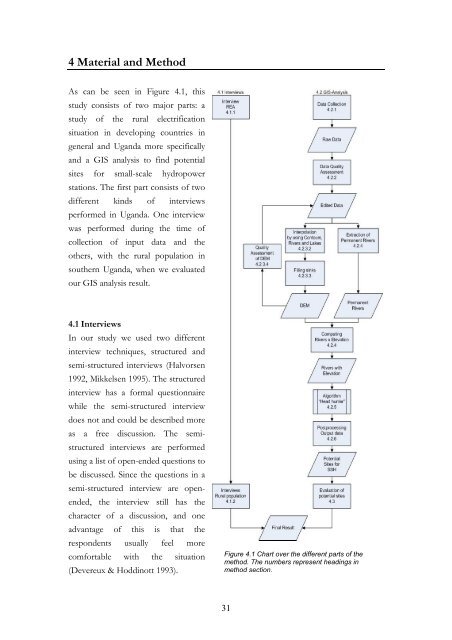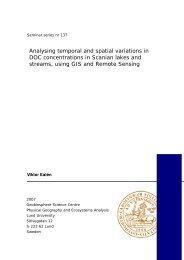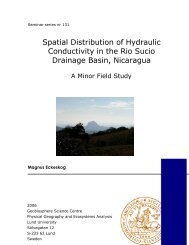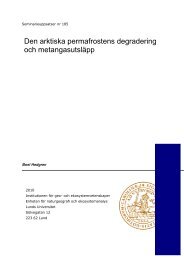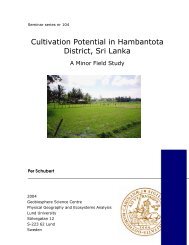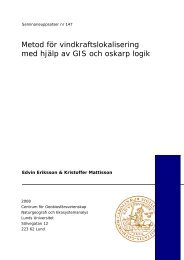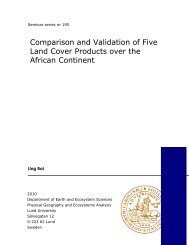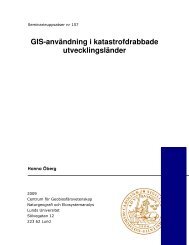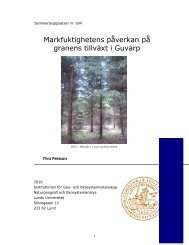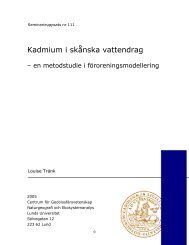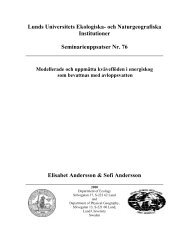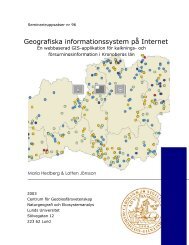Finding Potential Sites for Small-Scale Hydro Power in Uganda: a ...
Finding Potential Sites for Small-Scale Hydro Power in Uganda: a ...
Finding Potential Sites for Small-Scale Hydro Power in Uganda: a ...
Create successful ePaper yourself
Turn your PDF publications into a flip-book with our unique Google optimized e-Paper software.
4 Material and MethodAs can be seen <strong>in</strong> Figure 4.1, thisstudy consists of two major parts: astudy of the rural electrificationsituation <strong>in</strong> develop<strong>in</strong>g countries <strong>in</strong>general and <strong>Uganda</strong> more specificallyand a GIS analysis to f<strong>in</strong>d potentialsites <strong>for</strong> small-scale hydropowerstations. The first part consists of twodifferent k<strong>in</strong>ds of <strong>in</strong>terviewsper<strong>for</strong>med <strong>in</strong> <strong>Uganda</strong>. One <strong>in</strong>terviewwas per<strong>for</strong>med dur<strong>in</strong>g the time ofcollection of <strong>in</strong>put data and theothers, with the rural population <strong>in</strong>southern <strong>Uganda</strong>, when we evaluatedour GIS analysis result.4.1 InterviewsIn our study we used two different<strong>in</strong>terview techniques, structured andsemi-structured <strong>in</strong>terviews (Halvorsen1992, Mikkelsen 1995). The structured<strong>in</strong>terview has a <strong>for</strong>mal questionnairewhile the semi-structured <strong>in</strong>terviewdoes not and could be described moreas a free discussion. The semistructured<strong>in</strong>terviews are per<strong>for</strong>medus<strong>in</strong>g a list of open-ended questions tobe discussed. S<strong>in</strong>ce the questions <strong>in</strong> asemi-structured <strong>in</strong>terview are openended,the <strong>in</strong>terview still has thecharacter of a discussion, and oneadvantage of this is that therespondents usually feel morecom<strong>for</strong>table with the situation(Devereux & Hodd<strong>in</strong>ott 1993).Figure 4.1 Chart over the different parts of themethod. The numbers represent head<strong>in</strong>gs <strong>in</strong>method section.31


